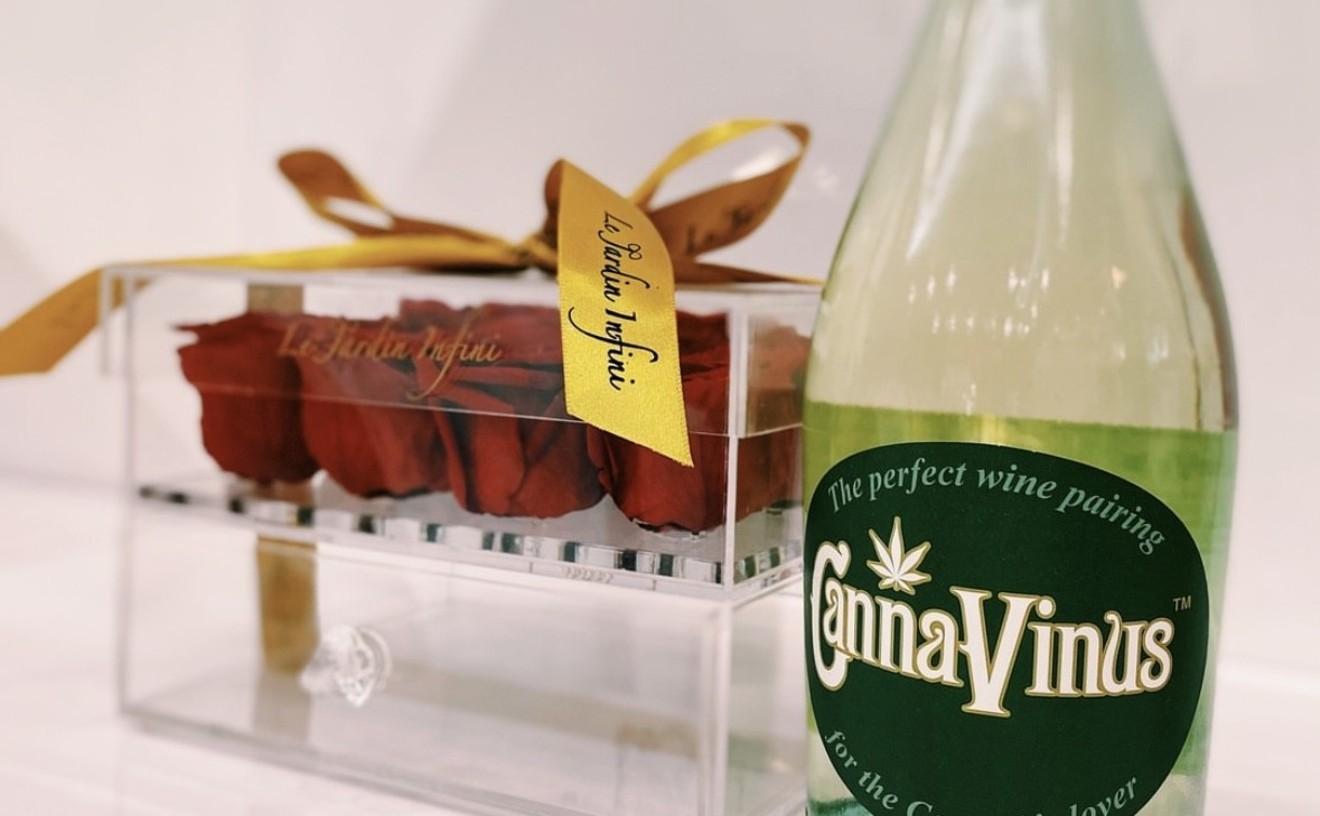Find me someone who doesn't like fried cheese and I'll show you an awful, unpatriotic, humorless, demon spawn who shouldn't be drawing breath. That or I'll show you someone who is lactose-intolerant (just a step above humorless demon spawn, in case you're keeping track). Lactose intolerance is no longer an excuse now that Lactaid is so readily available. Now that we've established the universal love for fried cheese, let's figure out a place to put it. Or better yet, let's take Canyon Southwest Cafe's Executive Chef Chris Wilber's advice. He's been stuffing a combination of three cheeses into a poblano pepper for more than 15 years now with amazing results. Wilber was kind enough to pass along the exact recipe he uses at Canyon, so let's get right to it.
Canyon Southwest Cafe's Herb and Goat Cheese Stuffed Poblanos
6 medium poblano chilies (about 2 to 2 1/2 ounces each) with stems
8 ounces goat cheese, at room temperature
4 ounces cream cheese, at room temperature
2 ounces fresh-grated Parmesan cheese (about 2/3 cup)
1/2 cup light-packed chopped cilantro
1/4 cup light-packed chopped fresh basil
Salt and fresh-ground pepper, to taste (be careful; the goat cheese and Parmesan can be salty)
2 large eggs, lightly beaten
2/3 cup blue or yellow cornmeal
Peanut oil, for frying
2 cups medium salsa
Cilantro sprigs, for garnish
1. Preheat the oven broiler. Place the poblano chilies on a broiler rack and broil on the top rack of the oven or as close to the broiler element as possible. Turn every 1 ½ to 2 minutes with kitchen tongs, until the skin starts to blister on all sides. Remove the chilies to a wire rack lined with paper towels and cool to room temperature.
2. When cool enough to handle, pull the skins off the chilies and slit each chili vertically to remove the seeds. Place cut side down on paper towels to drain as much moisture as possible.
3. Place the goat cheese, cream cheese, Parmesan, and chopped herbs in a good blender, a food processor fitted with the metal blade, or the bowl of an electric mixer and process, blend, or mix until well-combined. Add salt and pepper.
4. Fill each poblano chili with a portion of the cheese mixture, using a small spoon to make sure it reaches into all the cavities. Fold the chilies closed by pressing the cut edges together. (We stuffed the chilies several hours ahead and refrigerated them, loosely covered. This helped blend the herb flavor with the cheeses.)
5. When ready to cook, lightly beat the eggs in a small bowl. (Do not over beat or you will create air bubbles that will interfere with the adherence of the cornmeal to the pepper.) Dip each chili in the egg wash, then roll well in cornmeal. Place on paper towels until all are coated.
6. Place enough peanut oil to measure about 2 inches in a deep skillet. Heat to 350 degrees over medium-high heat; measure temperature with a deep-fry or candy thermometer. Add the chilies without crowding and cook about 5 minutes, or until golden brown on all sides, turning frequently. Transfer to paper towels to drain.
7. Puree salsa in a blender or a food processor fitted with the metal blade. Place in a nonreactive saucepan and heat over low heat. To serve, spoon about ½ cup salsa on each of six warm serving plates. Top each plate with a stuffed poblano. Garnish with cilantro sprigs. Makes six servings.
We all need a little alcohol with our meals, so try pairing it with a prickly pear margarita.










